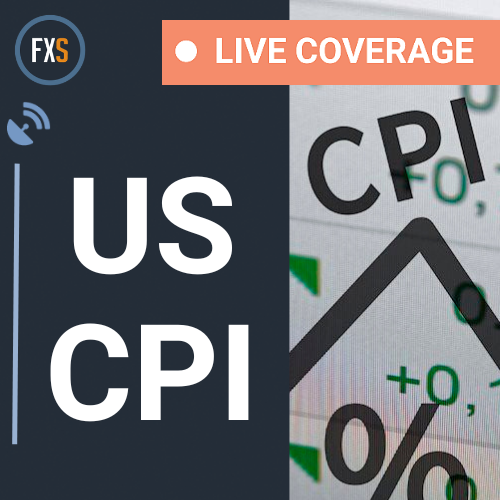Share:
Consumer Price Index in the US is expected to increase to 0.5% MoM in January.
Monthly Core CPI is forecast to remain at 0.4%.
US Dollar will need a hot US CPI print to kickstart another rally.
United States Consumer Price Index (CPI) data release for January, published by the US Bureau of Labor Statistics (BLS), will be out on Tuesday, February 14. The US Dollar (USD) is struggling to extend the recovery against its rivals since the last Federal Reserve (Fed) meeting.
The United States (US) inflation report will be published after the February Federal Reserve policy decision and could significantly impact the USD valuation.
On a yearly basis, the CPI data is forecast to decline to 6.2% in January from December’s 6.5%. The Core CPI, which excludes volatile food and energy prices, is expected to edge lower to 5.5% from 5.7%. On a monthly basis, the CPI is seen rising to 0.5% versus 0.1% previous. Meanwhile, the Core CPI is likely to remain at 0.4%, the same number it posted for December after a late revision of the data.
Investors will closely scrutinize the US CPI report, as it is the most influential macroeconomic indicator to measure consumer inflation, providing significant insights into the Federal Reserve’s monetary policy outlook.
Yohay Elam, Senior Analyst at FXStreet, signals that high expectations for the US CPI data don’t leave much room for a US Dollar rally:
“The mere talk of stronger inflation has already been pushing the US Dollar higher and stocks lower. It also means that without a positive surprise, recent moves may come undone. I expect the Greenback to fall on an increase of 0.4% in CPI. It may also suffer an adverse ‘buy the rumor, sell the fact’ response in response to a 0.5% read. It would take an unequivocally strong 0.6% figure to send the US Dollar up. A downbeat 0.3% figure or below would send it .”
The Consumer Price Index data report is scheduled for release at 13:30 GMT, on February 14. The monthly CPI data will draw more attention, as it is likely to rebound and emerge as a cause for concern for the Federal Reserve. Additionally, the declining trend in the annualized inflation is not seen as a surprise after peaking out at 9.1% in June last year.
A softer-than-expected reading would reinforce market expectations that the Fed could bring a pause to its policy tightening after the first quarter, prompting fresh selling around the US Dollar.
This, in turn, should allow the EUR/USD pair to initiate a meaningful recovery through the 1.0800 mark. In contrast, a surprisingly hot US CPI print could strengthen expectations of more rate increases from the Fed and add legs to the ongoing recovery in the US Dollar.
The US CPI data is likely to set the tone for markets in the coming weeks, in the lead-up to the February employment data and another CPI release before the March Fed policy meeting.
Nevertheless, any meaningful divergence from the expected readings should infuse some volatility in the markets and allow traders to grab short-term opportunities around the EUR/USD pair.
Dhwani Mehta offers a brief technical outlook for the major and explains: “EUR/USD has managed to recover ground above the 50-Daily Moving Average (DMA) on the daily chart in the run-up to the US CPI showdown. The 14-day Relative Strength Index (RSI), however, continues to hold below the midline, warranting caution for the Euro bulls.”
Dhwani also outlines important technical levels to trade the EUR/USD pair: “Buyers need to find acceptance above the 1.0750 psychological barrier to build on the recovery from five-week lows of 1.0655. Further up, the static resistance at 1.0800 will be the level to beat for bulls. On the flip side, if the 50DMA caves in again, then the multi-week low of 1.0655 will be retested. A sustained break below the latter will open floors for a test of the 1.0600 round figure.”
The Consumer Price Index released by the US Bureau of Labor Statistics is a measure of price movements by the comparison between the retail prices of a representative shopping basket of goods and services. The purchase power of USD is dragged down by inflation. The CPI is a key indicator to measure inflation and changes in purchasing trends. Generally speaking, a high reading is seen as positive (or bullish) for the USD, while a low reading is seen as negative (or Bearish).
Share:
Feed news





